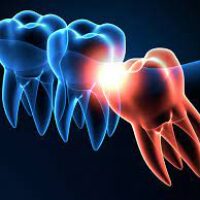Wisdom teeth are also known as third molars. These teeth are most or last posterior teeth in the dental curve. Even though most people have these teeth, there are cases of these teeth or third molars never getting developed. It is even possible that a person can also have more than 4 molar teeth or wisdom teeth. Many of them are having queries such as wisdom teeth headache and where it is located in the dental arch. This type of teeth is not visible to the people since these teeth have become impacted beneath gingival tissue. This means these teeth are not erupted normally through gums like other teeth. People want to know how they can know whether they are having wisdom teeth or not. When people examine their mouth they can find 3 permanent molars on each dental quadrant. If they feel that any one of the teeth gets impacted beneath the tissue, they should verify the presence of such a tooth using a radiograph.

A panoramic radiograph or X-Ray can help in assessing the state of tooth development and its angle of eruption. Most of this type of teeth can be examined erupting through the tissue gingival at the stage of early adulthood that is between 16 and 23 years. Even some people can feel the presence and effects of this type of teeth before they are able to examine them. For people who ask wisdom teeth headache, the answer is this type of tooth is erupted from the tissue resulting in giving a feel of dull throbbing and pressure in jaws. A general dentist can be able to tell the patient about the condition of the wisdom teeth. People who are having wisdom teeth should approach a doctor to make a decision if the tooth needs to be extracted. Not all the wisdom teeth required to be extracted. If the wisdom tooth erupts from the tissue cleanly without disturbing the adjacent tooth, then it can be kept in mouth.

Some of the factors that need to be considered before taking a decision of retaining the wisdom tooth in the mouth are the comfort of a person to brush, clean and floss thoroughly with no difficulty. But if the tooth is not completely erupted from the gingival tissue and causing infection or inflammation, then the decision of extracting the tooth should be considered. The growth of a soft tissue over the partially erupted tooth is known as operculum. If bacteria trap the operculum, a type of infection called pericoronitis gets developed. So, people should ask a dentist or search online about wisdom teeth headache and what it can cause if it is not treated properly. If the wisdom tooth erupts at an angle disturbing the adjacent molar tooth, then it will be difficult to keep it clean. So, people should approach the doctor and their molar teeth should be verified by the radiograph. This can prevent them from pain and inflammation caused by the eruption of wisdom teeth.

